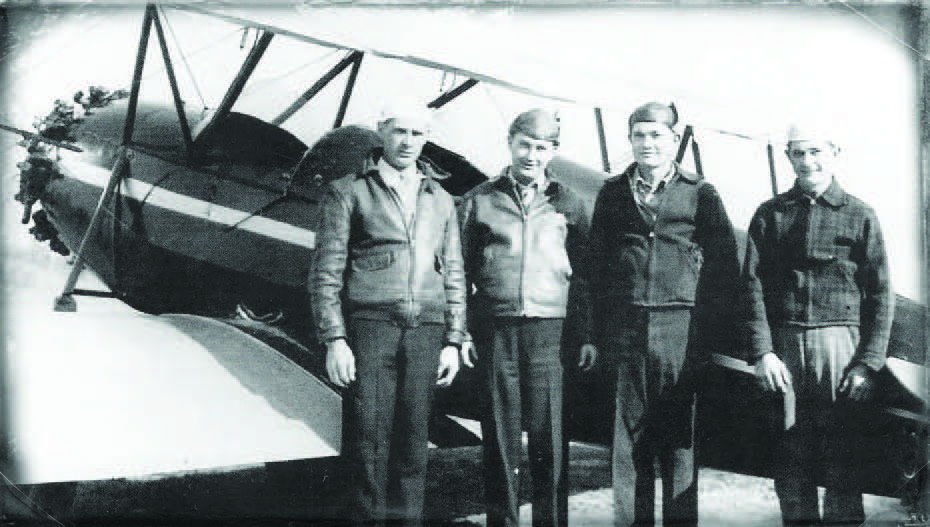[aviation news]
When I was thinking about listing and describing, as nearly as possible, every aviation Hall of Fame in the country, I had no idea what I was getting into. And it was obvious the editor wouldn’t give me that much space or that anybody would read it. You’ll be glad to know I abandoned the project, so keep reading.
See, nearly every state (curiously, not Ohio), plus every military service, every organization of sport pilots, aerobatic pilots, glider pilots, warbird pilots, helicopter pilots, black pilots, women pilots, and maybe even drone and RC flyers annually elect and celebrate people they want to honor as worthy of note. The nominating and electing processes are a little obscure. Some names are submitted by members of the organizations and then selected by a smaller board. Others are chosen…well, I’m not sure how or why. In most organizations, many Hall of Famers have already passed on…except the Living Legends of Aviation group in California, where, by definition, the person, often not a pilot, must be alive to be elected.
Some celebrate with an elaborate banquet and awards ceremony, while others simply honor their honorees with a plaque or a scroll. You can occupy an afternoon when the weather is crummy by googling aviation halls of fame and scrolling through pages and pages of names who have been selected and the galas held to honor them. In earlier years, the awardees were mostly well-known heroes and record breakers.
As time has passed (nearly 125 years of aviation), you’ll find many of those honored are talented or important people who have contributed in some fashion to aviation progress, but many are not pilots or well known to the public. And some, you’ll discover, are wealthy people who support these organizations but themselves have little or no direct connection to aviation. (I promised I wouldn’t say that, but…).
All operate as 501(3)(c) nonprofit organizations, that is, tax exempt in the category of “arts, cultural, humanities and multipurpose,” making even very generous contributions tax deductible. I’m quite familiar with three halls of fame. The National Aviation Hall of Fame (NAHF) in Dayton, Ohio, was formed through an Act of Congress in 1964, with the goal of honoring America’s aerospace pioneers. It’s the only congressionally chartered aviation Hall of Fame and is dedicated to “confidently promote the vision, innovation, skill and courage of national heroes who lent their genius to further our nation’s aerospace legacy.”
I attended three or four induction ceremonies in the 1970s and ’80s held in Dayton…well, I sort of coerced my husband, Ebby (himself kind of a legend), to attend the first after he was invited by his longtime friend, Harry Combs. And it certainly was a grand affair. There was a dinner and more casual program on Friday night, a luncheon hosted by JoDell Nutter on Saturday afternoon, and the big, formal gala on Saturday night. But the best part was meeting and talking to my heroes who had been or were about to be inducted—Leroy Grumman, Bob Hoover, Elrey Jeppesen, Kelly Johnson, Bob Reeve, Claude Ryan, Chuck Yeager, and others. It was flat-out splendid!
In fact, that first time Ebby and I attended, we spent Saturday afternoon touring around Dayton with Harry Combs and his wife and Neil Armstrong and his wife. And the part I most remember was visiting the Wright brothers mansion (then, not open to the public). It was a gray, rainy afternoon, and the caretaker guided us through the darkened house, showing some curious Wright inventions like a shower with dozens of water jets and an articulating book rest for more comfortable reading. As we came back to the entrance, I was still on the stairs looking down at the group. I stopped and said, “I’m trying to freeze this moment, standing with the first man to walk on the moon, in the house of the first men to fly off the face of the earth.” It was, well, an awesome moment.
A few years later, I became an official nominator for the NAHF and carefully chose each year from a long list of candidates who were then submitted to a board of electors. Rarely were any of my nominees chosen and, more deserving (they deemed) but less-well-known, high ranking military people, scientists, women pilots, and most Tuskegee Airmen were inducted. After moving from the downtown convention center in Dayton, the annual ceremony and museum moved into space in the National Museum of the United States Air Force near Dayton. It has since been held in other cities, including Washington, D.C., Fort Worth, and Wichita. By then I was out of the loop since I quit (in a snit) as a nominator after seeing how nomination politics worked, and my nominee, Barry Schiff (himself very definitely a living legend), was ignored.
The Georgia Aviation Hall of Fame at Warner-Robins Air Force Base invited me to introduce friend and mentor Bob McSwiggan as its 2012 nominee. For 25 years I had flown to Griffin, Georgia, just south of Atlanta, sent by the FAA for recurrent training in DC-3s operated by McSwiggan’s Academy Airlines. His operation also ran freight in Barons and two Carvair freighters from this small airport with only 3,100 feet of runway. Besides becoming an “ace” (tongue in cheek) in the Goon, I formed friendships with Bob and his sons, as well as wonderful aviators and people like Aubrey Sweezey, Wynn Baker, Lance Toland, Ron Alexander, Ed and Connie Bowlin, Ben Epps, and many others I will never forget.

But I fear I ruffled the feathers of one elderly member when I introduced myself at the podium, explaining that, with a figure like a boy, my strapless gown was irrefutable proof of the existence of lift and thrust.
Several years ago, Schiff invited me to the Living Legends of Aviation’s annual black-tie weekend gala in Beverly Hills, California, recognizing notable aviation accomplishments of extraordinary people—entrepreneurs, innovators, astronauts, record breakers, pilots who have become celebrities, and celebrities who have become pilots. Barry’s nominee, musician and pilot Kenny G, who flies his Beaver back and forth across the country, was at our table. I was there also to honor my friend and hero, Colonel Joe Kittinger. Both were among that year’s inductees along with uber-entrepreneur Jeff Bezos, who received a Freedom’s Wings Award.
The weekend playing dress-up, mingling with aviation elites (and not-so-elites, like me) at Clay Lacy’s Friday night hangar party and the very formal Saturday evening event at the Beverly Hilton was great fun. I’m afraid I committed another faux pas when I whispered to Barry, “who in the hell is this Kenny G guy you nominated?” It seems Kenny G is a preeminent and famous saxophone player who nearly everybody knows.
It’s held in the ballroom of the hotel, and proceeds ($1,600 per seat) fund the Kiddie Hawk Air Academy, with its mission is to “educate and inspire today’s youth and create tomorrow’s aviators and legends.” This year, some of the honorees are Daniel Drohan, Mike Silvestro, Tim Ellis, Mack Rutherford, Max Lyons, William Shatner, Lon and Brenda Halvorson, Jared Isaacman, General Jack Dailey, Mark Parent, Craig Sincock, and Aaron Tippin—most leaders or well known in the aviation industry…(I think).

So, am I taking off on aviation halls of fame much like I have on the Quiet Birdmen, the “Warbirdians,” the CAP, and, of course, the FAA? No. It is not that those formally honored aren’t deserving but that there are so many other truly unsung heroes. I’ll name a few, but I know there are many others you know and revere. Certainly, Stan Brock who founded and operated Remote Area Medical, flying supplies into Appalachia, Haiti, and Guiana in a DC-3, the four Hogan brothers who built an airport at Hamilton, Ohio, and flew air taxis, instructed, maintained, and did things with airplanes that were flat-out phenomenal. They also put their DC-3, a Beech 18, and an Aztec on loan to Brock for many years. And there’s FLYING’s own Peter Garrison—if I could only understand some of his brilliant technical pieces.
Every one of you who donates time and your airplanes to mercy flights, carrying sick people to specialty treatment centers or carrying food and supplies to disaster areas, or even therapy dogs and cats to where they’re needed are heroes. So, aviation halls of fame, as wonderful and well intentioned as they are, can’t possibly honor all the pilots and support people who are genuine heroes.
For what it is worth, I honor you.
This column first appeared in the June Ultimate Issue 959 of the FLYING print edition.
Share this content:

